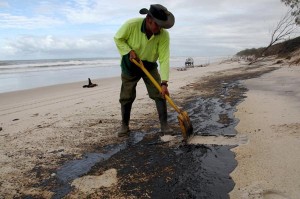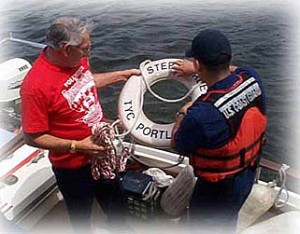Cleaning Up Oil Spills
 Oil spills are par for the course when working on the engine of a boat, car, or truck. It is possible to get rid of these spills, even when the spill is on a concrete floor. Start by laying down a layer of kitty litter or sawdust over the spill. The kitty litter or sawdust will soak up any excess oil still on the floor.
Oil spills are par for the course when working on the engine of a boat, car, or truck. It is possible to get rid of these spills, even when the spill is on a concrete floor. Start by laying down a layer of kitty litter or sawdust over the spill. The kitty litter or sawdust will soak up any excess oil still on the floor.
Once the liquid has been soaked up, sweep the kitty litter or sawdust into a dustpan and dispose of properly. With soap dish and a nylon bristle brush, rub the stained area to loosen up the oil. Finally set a pressure washer on a narrow, focused stream of water to break up the oil even further. These few steps should get the oil stains out of a concrete floor, even if you have a large spill involving bulk motor oil.












